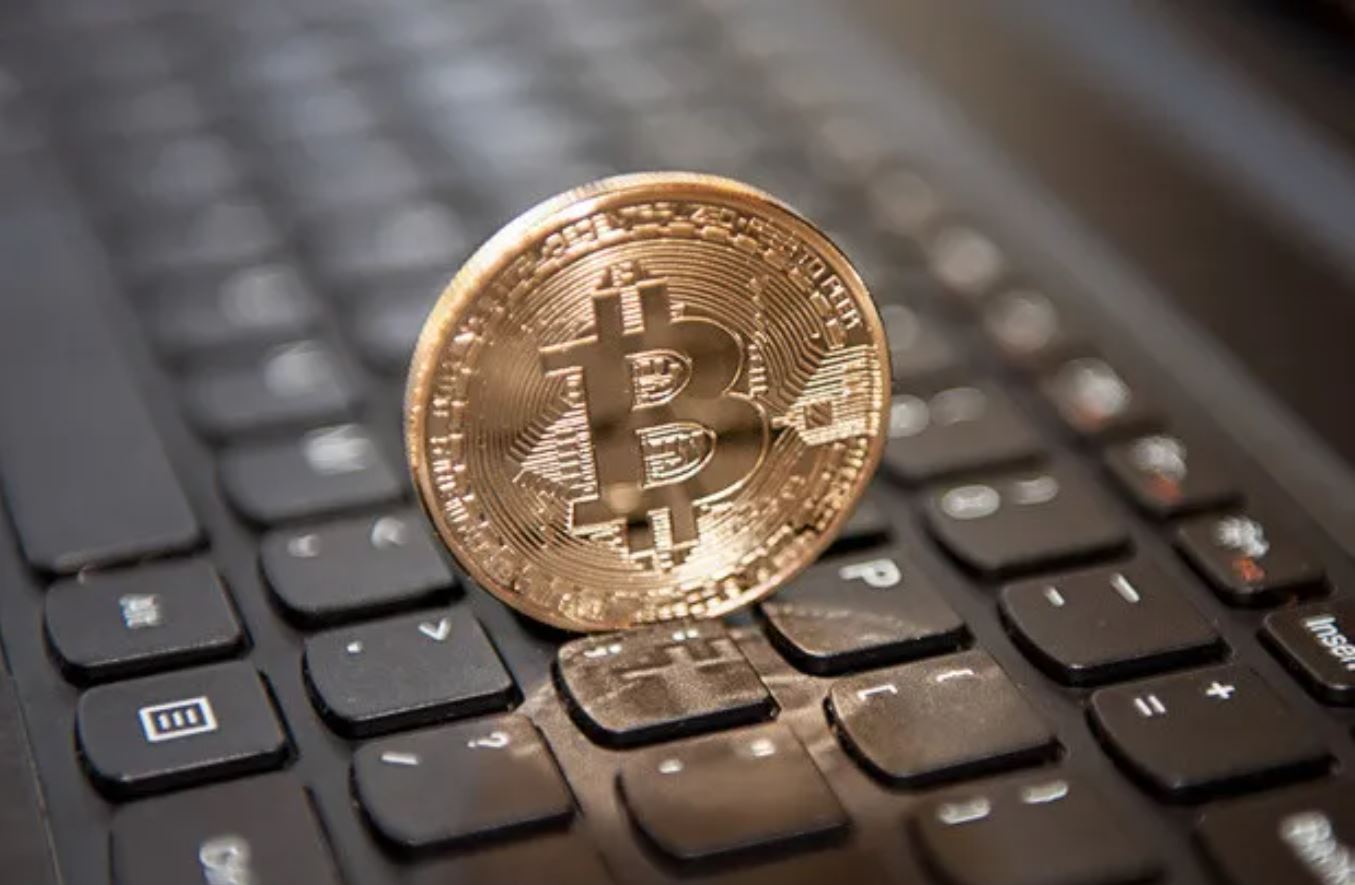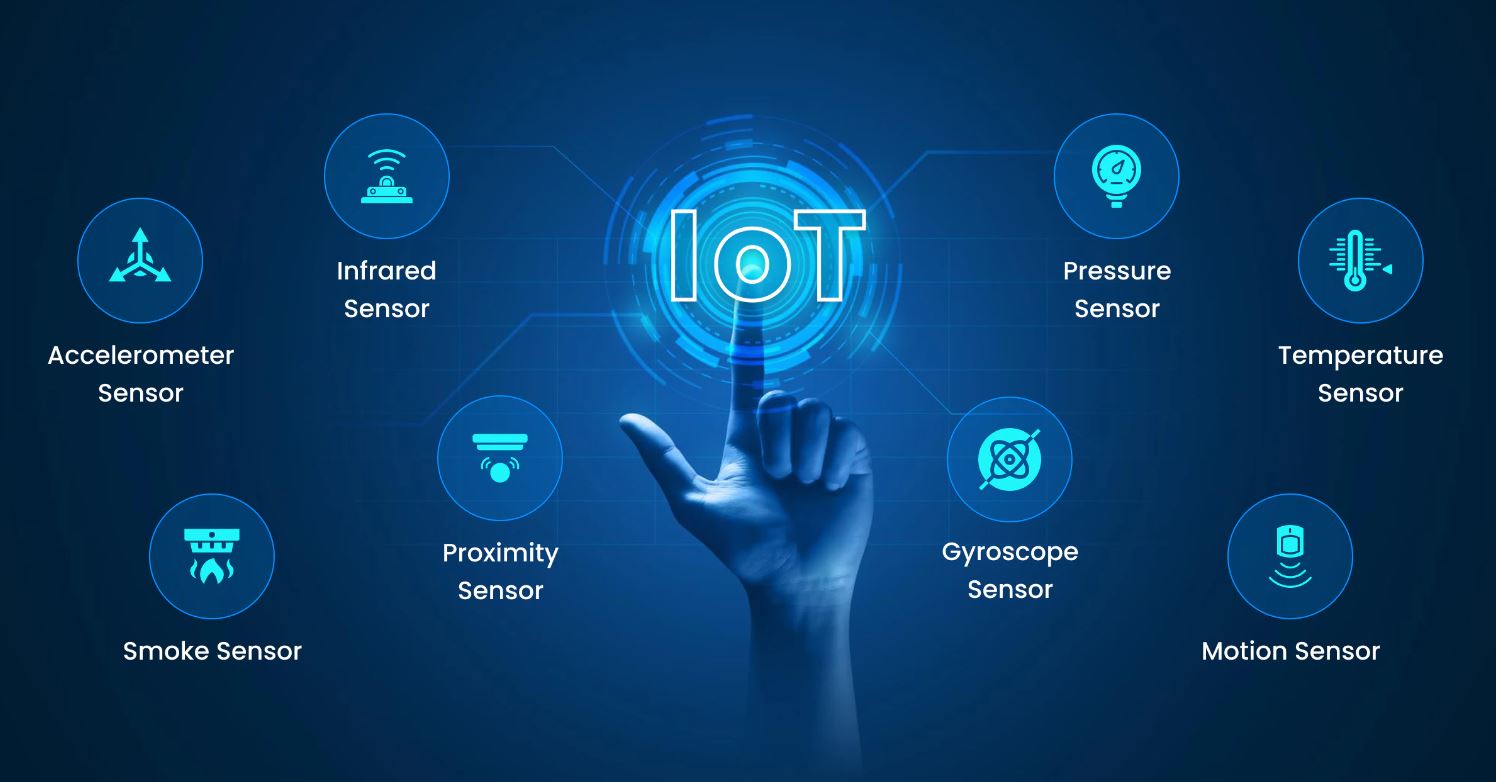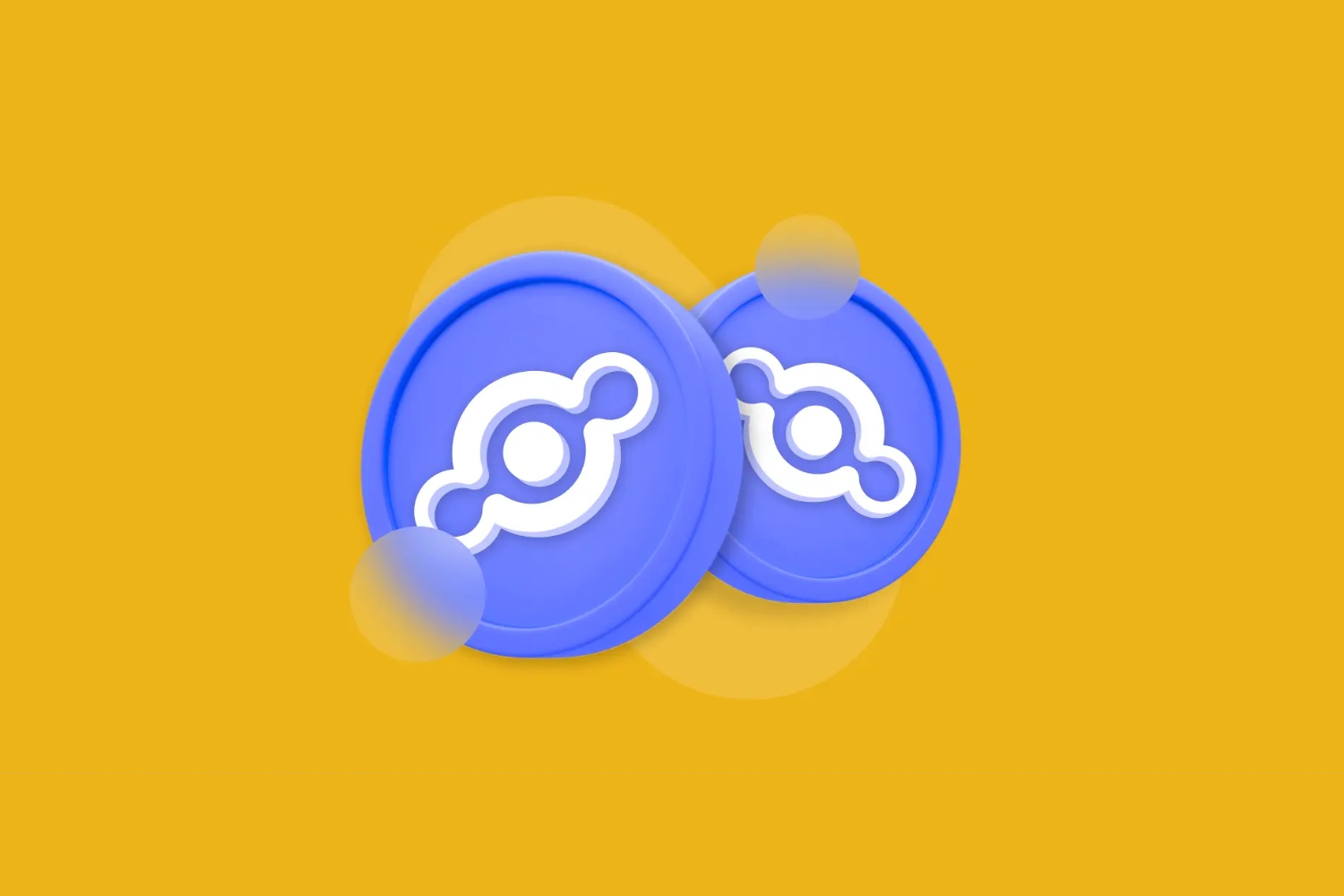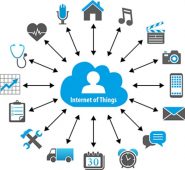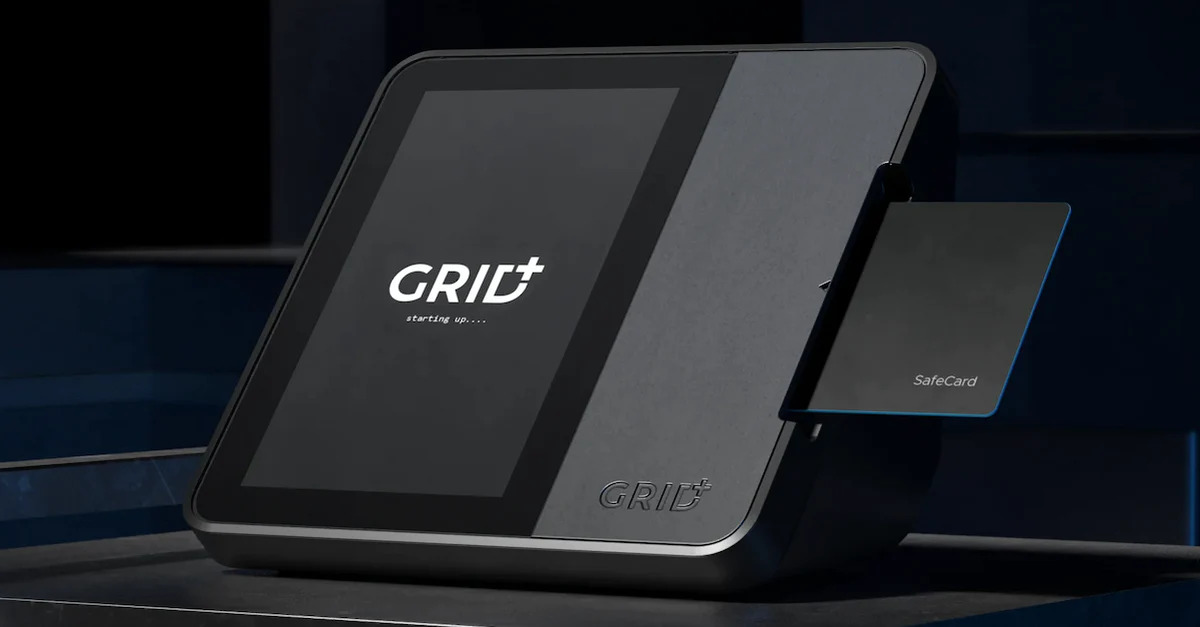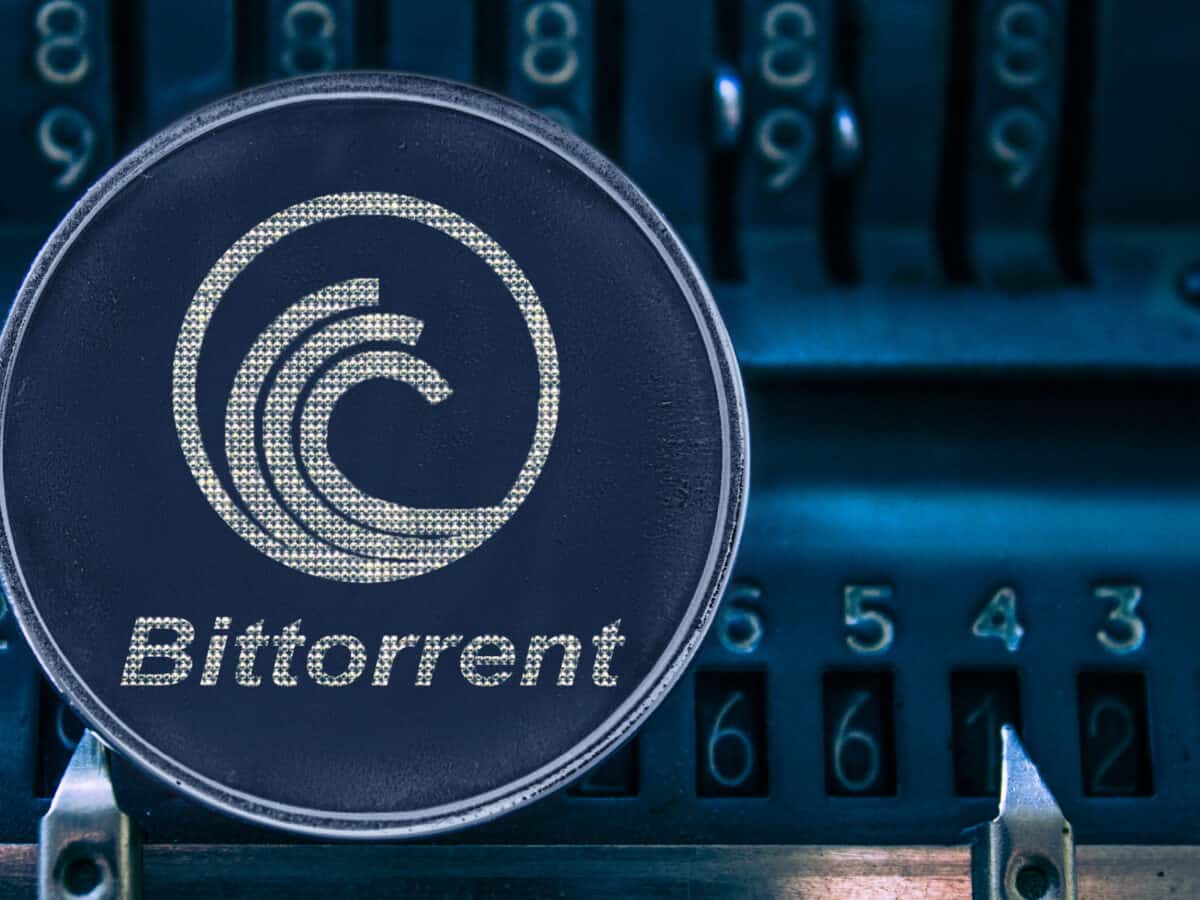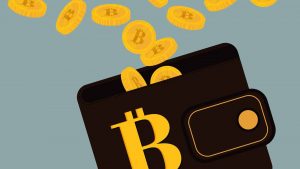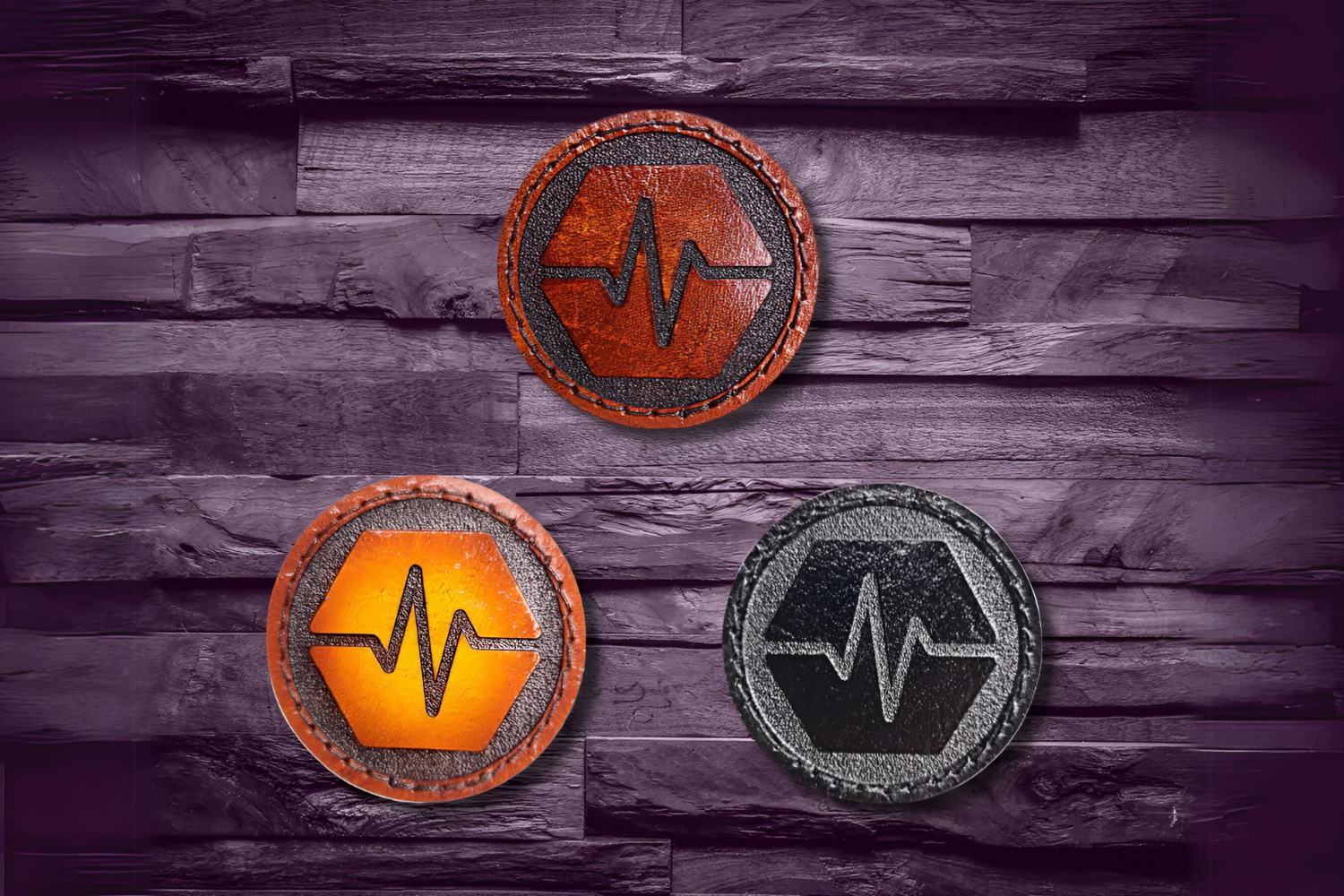Introduction
Welcome to the world of IoT Coin, a revolutionary technology that is poised to transform the way we interact with Internet of Things (IoT) devices. IoT Coin is a cryptocurrency designed specifically for the IoT ecosystem, enabling seamless, secure, and efficient transactions between connected devices. In this article, we will explore what IoT Coin is, how it works, its benefits, as well as its potential applications and challenges.
The Internet of Things (IoT) has brought about a paradigm shift in the way we live and work. With billions of connected devices collecting and exchanging data, there is a need for a decentralized and secure method of transacting between these devices. This is where IoT Coin comes into play.
IoT Coin is built on blockchain technology, which ensures transparency, immutability, and security of transactions. It provides a decentralized platform for devices to communicate and transact with each other without the need for intermediaries or centralized authorities.
By leveraging blockchain, IoT Coin enables secure and efficient peer-to-peer transactions between IoT devices. It eliminates the need for traditional payment gateways, reduces transaction costs, and enhances the speed and scalability of transactions.
Furthermore, IoT Coin is specifically designed to address the unique challenges of the IoT ecosystem. With built-in features such as machine-to-machine (M2M) communication, microtransactions, and smart contracts, IoT Coin offers a seamless and frictionless experience for IoT transactions.
Moreover, IoT Coin provides an additional layer of security to IoT devices. By utilizing cryptographic techniques, IoT Coin ensures that each transaction is secure and tamper-proof, mitigating the risk of fraud or unauthorized access.
As IoT adoption continues to grow, the demand for a secure and efficient method of transacting between connected devices becomes paramount. IoT Coin aims to fill this gap by providing a cryptocurrency solution tailor-made for the IoT ecosystem.
In the following sections, we will delve deeper into how IoT Coin works, its benefits, and potential applications. So, let’s dive in and explore the exciting world of IoT Coin!
What is IoT Coin?
IoT Coin is a digital cryptocurrency that is specifically developed to cater to the needs of the Internet of Things (IoT) ecosystem. It serves as a medium of exchange for IoT devices, enabling secure and efficient transactions between connected devices.
At its core, IoT Coin operates on blockchain technology, which ensures transparency, security, and decentralization of transactions. It leverages the power of distributed ledger technology to create a secure and immutable record of every transaction made within the IoT network.
IoT Coin is designed to address the unique challenges and requirements of the IoT ecosystem. Unlike traditional cryptocurrencies, IoT Coin focuses on enabling machine-to-machine (M2M) communication and microtransactions, which are essential for IoT devices to autonomously interact with each other and conduct small-scale transactions in a cost-effective manner.
By utilizing IoT Coin, IoT devices can seamlessly exchange value without the need for intermediaries or central authorities. This not only improves the efficiency of IoT transactions but also reduces the associated costs and eliminates the risk of single points of failure.
Furthermore, IoT Coin incorporates the use of smart contracts, which are self-executing agreements with the terms of the contract directly written into code. These smart contracts eliminate the need for manual intervention in IoT transactions, enabling automated and frictionless exchanges between devices.
One of the key features of IoT Coin is its focus on security. IoT devices, with their vast network of interconnected devices, are vulnerable to cyberattacks and data breaches. IoT Coin addresses this concern by implementing robust cryptographic protocols that ensure secure and tamper-proof transactions, safeguarding the integrity and confidentiality of data exchanged between IoT devices.
In summary, IoT Coin is a specialized cryptocurrency designed specifically for the Internet of Things ecosystem. It provides a secure, transparent, and efficient method of transacting between IoT devices, enabling seamless M2M communication, microtransactions, and smart contract functionality. With its focus on security and scalability, IoT Coin aims to revolutionize the way IoT devices interact and transact within the IoT ecosystem.
How does IoT Coin work?
IoT Coin operates on a decentralized blockchain platform, leveraging its distributed ledger technology to facilitate secure and efficient transactions between IoT devices. Let’s take a closer look at the key components and processes involved in how IoT Coin works.
1. Blockchain Technology: IoT Coin utilizes blockchain technology to create a decentralized and transparent ledger of transactions. Each transaction is recorded in a block and added to the chain, ensuring immutability and traceability.
2. Peer-to-Peer Transactions: IoT Coin enables direct peer-to-peer transactions between IoT devices, eliminating the need for intermediaries or centralized authorities. This enables fast and cost-effective transactions within the IoT network.
3. Machine-to-Machine (M2M) Communication: IoT Coin is designed to facilitate seamless M2M communication. IoT devices can autonomously interact with each other, exchange data, and carry out transactions using IoT Coin as the medium of exchange.
4. Microtransactions: IoT Coin supports microtransactions, allowing for small-scale value exchanges between IoT devices. This is crucial for enabling cost-effective transactions and real-time data exchange within the IoT ecosystem.
5. Smart Contracts: IoT Coin incorporates the use of smart contracts, which are self-executing agreements with predefined conditions written in code. Smart contracts automate the negotiation, execution, and enforcement of transactions, enhancing the efficiency and reliability of IoT transactions.
6. Secure Transactions: Security is a top priority in the IoT ecosystem. IoT Coin addresses this by implementing cryptographic protocols to ensure the authenticity, integrity, and confidentiality of IoT transactions. This safeguards the sensitive data exchanged between IoT devices and mitigates the risks of cyberattacks.
7. IoT Coin Wallets: Similar to traditional cryptocurrencies, IoT Coin relies on digital wallets to store and manage IoT Coins. IoT device owners can use these wallets to send, receive, and store IoT Coins securely.
8. Scalability and Interoperability: To address the growing needs of the IoT ecosystem, IoT Coin focuses on scalability and interoperability. It ensures that IoT devices can seamlessly interact with different IoT platforms and protocols, allowing for widespread adoption and integration within the IoT ecosystem.
In summary, IoT Coin operates on a decentralized blockchain platform, enabling peer-to-peer transactions, M2M communication, and microtransactions within the IoT ecosystem. It leverages smart contracts for automated and secure transactions while prioritizing scalability and interoperability. By utilizing cryptographic protocols, IoT Coin ensures the security and privacy of IoT transactions, making it a reliable and efficient medium of exchange for IoT devices.
Benefits of using IoT Coin
IoT Coin offers numerous benefits for both individuals and businesses operating within the Internet of Things (IoT) ecosystem. Let’s explore some of the key advantages of using IoT Coin as a medium of exchange for IoT transactions.
1. Seamless and Efficient Transactions: IoT Coin enables seamless and efficient transactions between IoT devices, eliminating the need for intermediaries or centralized authorities. This enhances the speed and reliability of transactions, allowing for real-time exchange of value and data within the IoT network.
2. Cost-Effectiveness: With its focus on microtransactions, IoT Coin enables cost-effective exchanges of value between IoT devices. It eliminates the need for expensive payment gateways or traditional banking systems, reducing transaction costs and facilitating small-scale transactions in a more economical manner.
3. Security and Privacy: Security is a critical concern in the IoT ecosystem. IoT Coin addresses this by leveraging cryptographic protocols to ensure the authenticity, integrity, and confidentiality of IoT transactions. This provides a secure and tamper-proof method of conducting transactions, protecting sensitive data exchanged between IoT devices.
4. Decentralization: IoT Coin operates on a decentralized blockchain platform, which means that transactions occur directly between IoT devices without the need for central authorities. This decentralization reduces the risk of single points of failure and enhances the reliability and transparency of IoT transactions.
5. Automation with Smart Contracts: IoT Coin integrates smart contract functionality, enabling automated and self-executing agreements between IoT devices. Smart contracts eliminate the need for manual intervention in IoT transactions, streamlining processes and reducing the potential for human errors or delays.
6. Interoperability: IoT Coin focuses on interoperability, ensuring that IoT devices can seamlessly interact with different IoT platforms and protocols. This flexibility enables widespread adoption and integration of IoT Coin within the diverse IoT ecosystem, enhancing compatibility and connectivity between devices.
7. Scalability: As the IoT ecosystem continues to grow, scalability becomes crucial. IoT Coin is designed to address scalability concerns, allowing for the smooth expansion of the network as the number of connected devices increases. This ensures that transactions maintain their efficiency and speed even as the IoT network expands.
8. Global Accessibility: IoT Coin is not bound by geographical boundaries, making it accessible to users worldwide. This global accessibility facilitates the exchange of value and data between IoT devices across different regions and markets, fostering innovation, and collaboration within the IoT ecosystem.
In summary, using IoT Coin as a medium of exchange within the IoT ecosystem offers benefits such as seamless transactions, cost-effectiveness, security, decentralization, automation with smart contracts, interoperability, scalability, and global accessibility. These advantages make IoT Coin an attractive solution for individuals and businesses looking to enhance the efficiency, security, and functionality of IoT transactions.
How to get started with IoT Coin
If you are interested in exploring the potential of IoT Coin and getting started with this innovative cryptocurrency, here are the steps to begin your journey:
1. Research and Education: Start by learning more about IoT Coin and its underlying technology. Understand the key concepts of blockchain, cryptocurrencies, and the specific features and benefits of IoT Coin within the IoT ecosystem.
2. Set up a Wallet: To store your IoT Coins securely, you’ll need to set up a compatible wallet. There are various types of wallets available, including hardware wallets, software wallets, and online wallets. Choose a wallet that meets your security requirements and download or purchase it from a trusted source.
3. Obtain IoT Coins: You can acquire IoT Coins through various methods. One option is to purchase them from cryptocurrency exchanges that support IoT Coin trading. Look for reputable exchanges that offer IoT Coin and follow their registration and verification processes. Alternatively, you may also earn or receive IoT Coins through mining, staking, or participating in airdrops or token sales.
4. Secure Your Wallet: Once you have obtained IoT Coins, it’s essential to secure your wallet to protect your investment. Set up strong passwords, enable two-factor authentication, and consider using a hardware wallet for added security. Regularly update your wallet software and be cautious of phishing attempts or suspicious websites posing as wallet providers.
5. Start Transacting: With your IoT Coin wallet set up and funded, you can now start transacting within the IoT ecosystem. Explore IoT platforms, devices, and services that accept IoT Coin as a form of payment. These can range from smart home devices, industrial IoT applications, or any other IoT service that integrates with IoT Coin.
6. Stay Informed: Stay updated with the latest news, developments, and trends in the IoT and cryptocurrency space. Follow trusted sources, join relevant online communities, and engage with industry experts to stay informed about potential applications, partnerships, and advancements related to IoT Coin.
7. Monitor Market Conditions: As with any cryptocurrency, the value of IoT Coin may fluctuate in the market. Stay vigilant and monitor market conditions to make informed decisions regarding buying, selling, or holding your IoT Coins. Keep an eye on market trends, trading volumes, and any news that may impact the value of IoT Coin.
8. Participate in the Community: Engage with the IoT Coin community to share ideas, insights, and experiences. Join forums, social media groups, or attend blockchain and IoT conferences to network with like-minded individuals and contribute to the growth and development of the IoT Coin ecosystem.
Remember, investing in cryptocurrencies involves risks, and it’s essential to do your due diligence and make informed decisions. Only invest what you can afford to lose and consider consulting with a financial advisor before making any significant investment.
By following these steps, you can begin your journey with IoT Coin, exploring the vast possibilities and potential within the exciting world of the Internet of Things.
Potential Applications of IoT Coin
IoT Coin has the potential to revolutionize various industries and enable new applications within the Internet of Things (IoT) ecosystem. Let’s explore some of the potential use cases and applications of IoT Coin:
1. Smart Home Automation: IoT Coin can be utilized in smart home automation systems to facilitate seamless and secure transactions between connected devices within the home. Users can use IoT Coin to pay for energy consumption, unlock doors, or control various smart devices, creating a truly interconnected and automated living environment.
2. Supply Chain Management: IoT Coin can enhance supply chain transparency and efficiency by enabling secure and automated transactions between different stakeholders in the supply chain. IoT devices equipped with IoT Coin wallets can autonomously transact and exchange value, facilitating real-time tracking of products, inventory management, and streamlined payment processes.
3. Autonomous Vehicles and Transportation: IoT Coin can play a vital role in enabling transactions between autonomous vehicles and infrastructure. Vehicles equipped with IoT Coin wallets can autonomously pay for tolls, parking fees, or energy consumption, creating a seamless and efficient transportation system that operates without human intervention.
4. Energy Grid Management: IoT Coin can be used to incentivize energy producers and consumers in a decentralized energy grid. By using IoT Coin as a medium of exchange, consumers can sell excess energy generated by their solar panels, while producers can earn IoT Coins for supplying energy to the grid. This promotes the adoption of renewable energy sources and improves the efficiency of energy distribution.
5. Healthcare and Medical Devices: IoT Coin can facilitate secure and transparent transactions within the healthcare industry. Smart medical devices can utilize IoT Coin for data exchange, payments for healthcare services, and securing medical records. This enhances patient privacy, enables secure telehealth consultations, and simplifies billing and insurance processes.
6. Industrial IoT: In the industrial sector, IoT Coin can be used for machine-to-machine (M2M) transactions, streamlining processes, reducing costs, and enhancing the efficiency of industrial operations. IoT devices within factories or manufacturing facilities can transact with each other using IoT Coin, ensuring seamless communication and optimizing production processes.
7. Smart Cities: IoT Coin has the potential to play a crucial role in building smart cities of the future. By integrating IoT devices equipped with IoT Coin wallets, cities can enable secure and automated transactions for services like parking management, public transportation, waste management, and energy consumption. This improves efficiency, reduces costs, and enhances the overall quality of life for residents.
8. Agriculture: IoT Coin can be utilized in the agriculture industry to enable transactions between farmers, suppliers, and distributors. IoT devices integrated with IoT Coin wallets can automate payments for agricultural products, enable real-time monitoring of crop conditions, and enhance the traceability of food products from farm to table.
These are just a few examples of the potential applications of IoT Coin. As the IoT ecosystem continues to evolve, the possibilities for integrating IoT Coin into various industries and use cases are vast. By leveraging the benefits of IoT Coin, businesses and individuals can accelerate the adoption of IoT and unlock new opportunities in a secure and efficient manner.
Challenges and Risks of using IoT Coin
While IoT Coin presents promising opportunities within the Internet of Things (IoT) ecosystem, there are also several challenges and risks that need to be considered. Let’s explore some of the key challenges and risks associated with using IoT Coin:
1. Security Concerns: As with any cryptocurrency, security is a major concern. Despite the robust encryption and cryptographic protocols used in IoT Coin transactions, there is still a risk of cyberattacks, hacking attempts, and theft of IoT Coins. Protecting IoT Coin wallets and private keys is crucial to mitigate the risk of unauthorized access and financial loss.
2. Scalability Issues: The scalability of IoT Coin can be a challenge when it comes to handling a large number of IoT devices and transactions. As the IoT ecosystem continues to grow, the capacity of the underlying blockchain platform may need to be improved to accommodate the increased transaction volume and ensure fast and efficient transactions.
3. Regulatory and Legal Framework: The regulatory landscape surrounding cryptocurrencies is still evolving. Different countries may have varying views and regulations on the use of cryptocurrencies like IoT Coin. Uncertainty in regulatory frameworks can pose legal and compliance risks, affecting the adoption and acceptance of IoT Coin in certain jurisdictions.
4. Volatility and Market Risks: Cryptocurrency markets are known for their volatility, and IoT Coin is no exception. The value of IoT Coin can fluctuate greatly, which poses risks for investors and users. Market volatility can impact the purchasing power of IoT Coin and may also deter mainstream adoption due to concerns around stability.
5. Adoption and Network Effects: The success of IoT Coin relies on its adoption within the IoT ecosystem. For IoT Coin to thrive, it needs widespread acceptance and integration with a large number of IoT devices and platforms. Building a robust network effect where IoT devices and businesses actively utilize IoT Coin as a medium of exchange can be a challenge and may require significant effort and collaboration.
6. Interoperability and Fragmentation: The IoT ecosystem consists of various protocols, platforms, and standards, which can lead to interoperability challenges. IoT Coin needs to ensure compatibility and smooth integration with different IoT technologies to realize its full potential. Fragmentation within the IoT ecosystem can slow down the adoption of IoT Coin as businesses may face compatibility issues when implementing IoT Coin transactions.
7. Environmental Impact: The energy consumption associated with cryptocurrency mining can have an environmental impact. As IoT Coin relies on mining for transaction validation, it may contribute to increased energy consumption and carbon footprint, which is a concern in the context of sustainable development and responsible energy consumption.
In summary, while IoT Coin presents exciting opportunities within the IoT ecosystem, there are challenges and risks that need to be carefully navigated. Addressing security concerns, ensuring scalability, navigating regulatory frameworks, managing market volatility, driving adoption and interoperability, and minimizing environmental impact are important factors to consider for the successful implementation and utilization of IoT Coin.
Future Developments and Trends of IoT Coin
The future of IoT Coin holds great potential for innovation and advancement within the Internet of Things (IoT) ecosystem. Here are some anticipated developments and trends that may shape the future of IoT Coin:
1. Enhanced Scalability: As the IoT ecosystem continues to expand, there will be a growing demand for scalable solutions. Future developments of IoT Coin will likely focus on improving scalability to accommodate the increasing number of IoT devices and transactions. This will ensure that IoT Coin can handle the growing volume of transactions while maintaining fast and efficient processing times.
2. Improved Interoperability: Interoperability is a crucial factor for widespread adoption of IoT Coin. Future developments will aim to enhance interoperability with different IoT platforms, protocols, and devices, enabling seamless integration and interaction between various IoT technologies. This will facilitate collaboration and compatibility between different stakeholders in the IoT ecosystem.
3. Integration of Artificial Intelligence (AI): The convergence of IoT and AI presents exciting opportunities. Future trends of IoT Coin may involve the integration of AI technologies to enhance the functionality and intelligence of IoT devices. AI algorithms can analyze IoT data, automate decision-making processes, and optimize IoT transactions, making IoT Coin even more efficient and secure.
4. Increased Focus on Privacy and Data Security: With the increasing concerns about data privacy, future developments of IoT Coin will likely prioritize strong encryption techniques and privacy-enhancing features. This will ensure that IoT transactions conducted with IoT Coin maintain the highest levels of security, protecting the sensitive data exchanged between IoT devices and their users.
5. Integration with IoT Protocols and Standards: IoT Coin will need to align with prevailing IoT protocols and standards to ensure widespread adoption. Future developments will focus on integrating with existing IoT protocols like MQTT, CoAP, or OCF, as well as upcoming standards, to facilitate seamless communication and transactions between IoT devices and platforms.
6. Integration in Smart Contracts and Decentralized Applications (DApps): Smart contracts have revolutionized the way transactions are executed. In the future, IoT Coin may further integrate with smart contracts and decentralized applications, allowing for automated and trustless IoT transactions. This will improve the efficiency and transparency of IoT transactions while reducing the reliance on intermediaries.
7. Collaboration with Industry Stakeholders: Collaborations between IoT Coin developers, IoT device manufacturers, industry leaders, and organizations will play a vital role in shaping the future of IoT Coin. Such partnerships can drive innovation, promote integration, and foster the adoption of IoT Coin in various industries and use cases.
8. Regulatory Frameworks and Compliance: As the regulatory landscape surrounding cryptocurrencies evolves, future developments of IoT Coin will aim to ensure compliance with relevant regulations. Collaborations with regulatory authorities and adherence to legal frameworks will build trust and foster a favorable environment for IoT Coin adoption.
In summary, the future developments and trends of IoT Coin include scalability improvements, enhanced interoperability, integration of AI technologies, increased focus on privacy and data security, alignment with IoT protocols and standards, integration with smart contracts and DApps, collaboration with industry stakeholders, and adherence to regulatory frameworks. These developments will shape the future of IoT Coin, enabling its widespread adoption and integration within the growing IoT ecosystem.
Conclusion
IoT Coin represents a promising solution for facilitating secure and efficient transactions within the Internet of Things (IoT) ecosystem. By leveraging the power of blockchain technology, IoT Coin enables seamless communication, microtransactions, and automation between IoT devices. It addresses the unique challenges of the IoT ecosystem, including security, scalability, and interoperability.
With IoT Coin, users can experience the benefits of decentralized transactions, reduced costs, enhanced privacy, and improved efficiency within the IoT network. The integration of smart contracts further streamlines and automates transactions, reducing the need for manual intervention and expediting the exchange of value and data.
However, there are challenges and risks associated with using IoT Coin, including security concerns, scalability issues, regulatory frameworks, market volatility, and the need for widespread adoption. Overcoming these challenges requires continuous development, collaboration, and adherence to evolving industry standards and regulations.
The future of IoT Coin holds exciting possibilities for further advancements. Improved scalability, enhanced interoperability, integration with AI technologies, increased focus on privacy and data security, collaboration with industry stakeholders, and adherence to regulatory frameworks are expected trends in the development of IoT Coin.
As the IoT ecosystem continues to evolve and expand, IoT Coin will play a crucial role in enabling secure and efficient transactions between IoT devices. It has the potential to revolutionize industries such as smart home automation, supply chain management, healthcare, transportation, and energy grid management.
To get started with IoT Coin, individuals and businesses should research and educate themselves about its technology and benefits. They should set up a secure IoT Coin wallet, obtain IoT Coins through reputable exchanges or alternative methods, and start exploring IoT platforms, devices, and services that accept IoT Coin as a form of payment.
In conclusion, IoT Coin opens up a world of possibilities within the IoT ecosystem, offering secure and efficient transactions, increasing automation, and enhancing the connectivity between IoT devices. While there are challenges and risks to address, the future developments and trends of IoT Coin demonstrate its potential for innovation and growth within the evolving IoT landscape.







